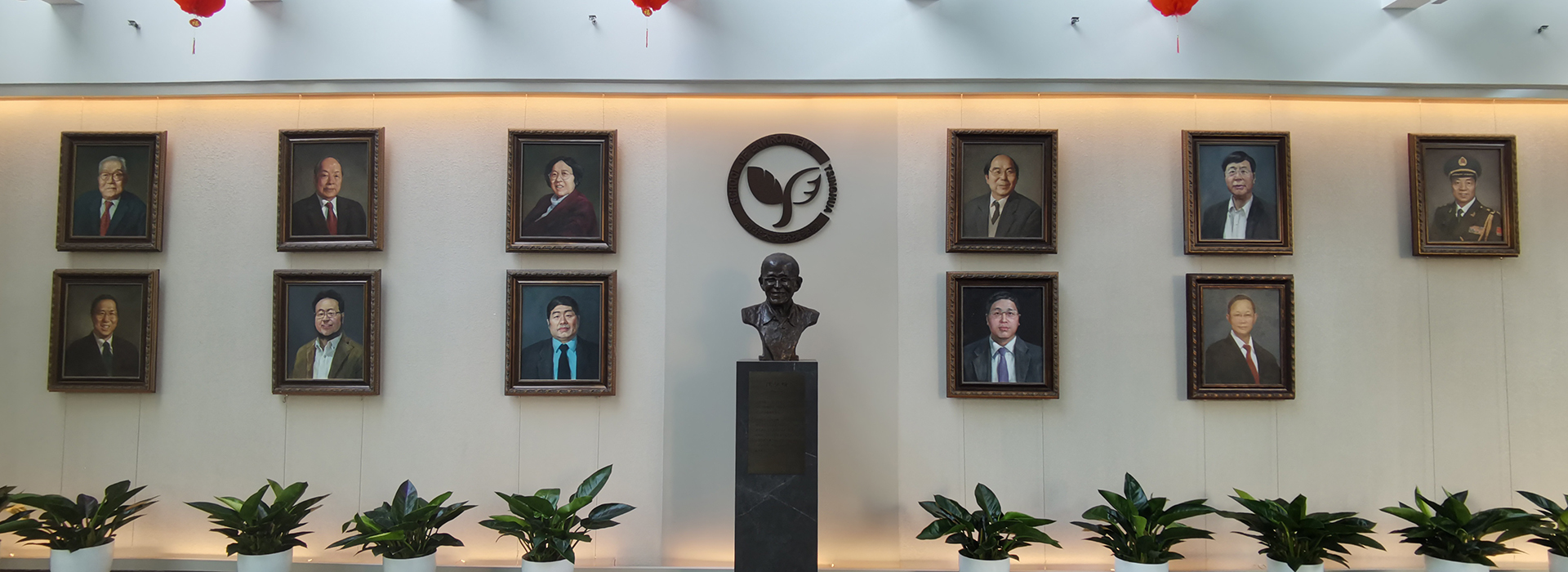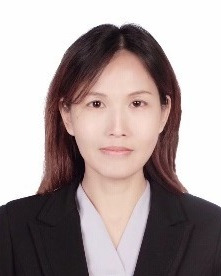2001.9-2005.7 清华大学环境科学与工程系 环境工程博士
1998.9-2001.7 北京科技大学化学系分析化学硕士
1991.9-1995.7 山东省曲阜师范大学化学系 化学教育学士
本站不再支持您的浏览器,360、sogou等浏览器请切换到极速模式,或升级您的浏览器到 更高版本!以获得更好的观看效果。关闭

师资队伍
首页 > 师资队伍 > 教师 > 大气污染与控制教研所 > 正文
大气污染与控制教研所

段凤魁
 邮箱:duanfk@tsinghua.edu.cn
邮箱:duanfk@tsinghua.edu.cn
 电话:电话:010-62782030
电话:电话:010-62782030
 地点:地点:清华大学中意环境节能楼
地点:地点:清华大学中意环境节能楼

教育背景
2001.9-2005.7 清华大学环境科学与工程系 环境工程博士
1998.9-2001.7 北京科技大学化学系分析化学硕士
1991.9-1995.7 山东省曲阜师范大学化学系 化学教育学士

工作履历
2019.12–至今 清华大学环境学院,副研究员
2011.01–2019.11 清华大学环境学院,高级工程师
2009.12–2011.01 清华大学环境科学与工程系,高级工程师
2005.08–2009.12 清华大学环境科学与工程系,工程师
2015.07–至今 室内空气质量评价与控制北京市重点实验室副主任
2019.10 哈佛大学,访问学者
2015.11 日本大阪大学理学院,访问学者
2011.07–2011.11 加拿大环境部,访问学者
2005.12–2006.03 比利时根特大学分析化学系,访问学者
2002.12 日本庆应大学理学院,访问学者
教学:
《校园环境监测》《环境监测实验》(本科生)(国家精品课程)
《大气污染控制工程实验》(本科生)(国家精品课程)

奖励与荣誉
2005 清华大学优秀博士学位论文一等奖
2007 全国百篇优秀博士学位论文
2009 国家自然科学二等奖 (第3完成人)
2007 教育部自然科学一等奖(第3完成人)
2007 环境保护科学技术二等奖(第6完成人)
2012 清华大学教学成果一等奖(第3完成人)
2014 清华大学教学成果二等奖(第2完成人)
2013 清华大学优秀班主任
2015 清华大学优秀招生新人
2014 清华大学第13届实验技术成果二等奖(第1完成人)
2016 清华大学第14届实验技术成果三等奖(第2完成人)
2016 清华大学环境学院教学工作先进个人
2023 教育部自然科学一等奖(第三完成人)

研究领域
1. 环境有机分析
2. 单颗粒理化特征
3. 大气污染形成机制
(课题组长期招收本科生、硕士生、博士生及博士后,请发简历至duanfk@tsinghua.edu.cn)

研究概况
国家重点研发计划项目:针对不同粒径范围的含碳颗粒物连续监测技术及关键化学生物特征与来源研究(2022.6-2025.5)
国家自然科学基金委重大研究计划集成项目:我国东部超大城市群大气复合污染成因外场综合协同观测研究(2021.1-2023.12)
国家自然科学基金委基础科学中心项目:大气霾化学(2022.1-2026.12)
863科技支撑项目:长三角区域大气重污事件发生特征与形成途径研究(2014-2017)
大气重污染成因与治理攻关项目:秋冬季重污染的化学过程机理研究(2017.4-2019.9)
国家重点研发计划课题:大气污染环境暴露及个体暴露特征分析(2017-2020)
国家重点研发计划课题:重点行业排放监测与评估(2016-2019)
国家973计划课题,全球大气气溶胶源汇机制研究及模式研制(2010-2015)
全国优秀博士学位论文作者专项资金:重点城市PM2.5复合污染形成机制研究(2008-2013)
国家自然科学基金中英重大国际科技合作项目:北京大气污染对心肺疾病影响的暴露科学、毒理基因组学和环境流行病学综合研究(2016-2019)
国家自然科学基金项目:大气细颗粒物污染暴露在呼吸系统的分布以及毒害作用的分子病理学研究(2015-2018)
环保公益性项目:室内空气细颗粒物污染和健康风险评价及控制对策研究(2014-2016)
国家自然科学基金重大项目:大气二次颗粒物的化学组分特征及形成机制(2012-2016)
国家自然科学基金青年基金项目:升温模式和样品性质对大气颗粒物中有机碳和元素碳测定偏差的影响(2012-2014)
国家自然科学基金项目:北京含碳细颗粒物来源的稳定碳同位素识别(2007-2009)
国家自然科学基金项目:典型城市雾过程对大气颗粒物物理化学特征的影响(2005-2007)
国家自然科学基金项目:城市大气PM2.5水溶性有机物分析方法及污染特征研究(2004)
高等学校博士学科点专项科研基金:应用发光细菌研究复合大气颗粒物污染的生态毒性(2009-2011)
国家“863”计划课题:大气细粒子采样技术与设备(2003-2005)
国家“863”计划课题:大气细粒子连续监测技术与设备(2001-2002)

学术成果
Ma Tao , Hiroshi Furutani, Duan Fengkui*, Ma Yongliang, Michisato Toyoda, Takashi Kimoto, Huang Tao and He Kebin*. Real-Time Single-Particle Characteristics and Aging of Cooking Aerosols in Urban Beijing. Environ. Sci. Technol. Lett., 2023, 10, 404−409, DOI: 10.1021/acs.estlett.3c00053.
Liu Tianyi, Duan Fengkui*, Ma Yongliang, Ma Tao, Zhang Qinqin,Xu Yunzhi, Li Fan, Huang Tao, Takashi Kimoto, Zhang Qiang, He Kebin. Classification and sources of extremely severe sandstorms mixed with haze pollution in Beijing. Environmental Pollution 2023,322, DOI: 10.1016/j.envpol.2023.121154.
Ma Tao, Hiroshi Furutani,Duan Fengkui*, Takashi Kimoto, Ma Yongliang ,Zhu Lidan, Huang Tao, Michisato Toyoda, He Kebin. Distinct diurnal chemical compositions and formation processes of individual organic-containing particles in Beijing winter. Environmental Pollution,2023,318, DOI: 10.1016/j.envpol.2022.120846.
Ma Tao, Duan Fengkui⁎, Ma Yongliang, Zhang Qinqin, Xu Yunzhi, Li Wenguang, Zhu Lidan, He Kebin. Unbalanced emission reductions and adverse meteorological conditions facilitate the formation of secondary pollutants during the COVID-19 lockdown in Beijing. Science of the Total Environment,2022, 838,DOI: 10.1016/j.scitotenv.2022.155970.
Li Hui, Ma Yongliang, Duan Fengkui*,Huang Tao, Takashi Kimoto, Hu Yunxing, Huo Mingyu, Li Shihong, Ge Xiang, Gong Wanru, He Kebin. Characterization of haze pollution in Zibo, China: Temporal series, secondary species formation, and PMx distribution. Chemosphere,2022,286,DOI:10.1016/j.chemosphere.2021.131807.
Li Wenguang,Duan Fengkui⁎, Zhao Qing⁎⁎, Song Weiwei, Cheng Yuan, Wang Xiaoyan, Li Lei, He Kebin. Investigating the effect of sources and meteorological conditions on wintertime haze formation in Northeast China: A case study in Harbin. Science of the Total Environment,2021,801,DOI: 10.1016/j.scitotenv.2021.149631.
Li Hui, Ma Yongliang, Duan Fengkui*, Zhu Lidan, Ma Tao, Yang Shuo, Xu Yunzhi, Li Fan, Huang Tao, Takashi Kimoto ,Zhang Qinqin, Tong Dan, Wu Nana, Hu Yunxing, Huo Mingyu, Zhang Qiang, Ge Xiang, Gong Wanru, He Kebin. Stronger secondary pollution processes despite decrease in gaseous precursors: A comparative analysis of summer 2020 and 2019 in Beijing*.Environmental Pollution,2021,279,DOI:10.1016/j.envpol.2021.116923.
Yang Shuo, Duan Fengkui⁎, Ma Yongliang, Li Hui, Wang Jiali, Du Zhenyu, Xu Yunzhi, Zhang Ting, Zhu Lidan, Huang Tao, Takashi Kimoto,Zhang Lifei, He Kebin⁎ Characteristics and seasonal variations of high-molecular-weight oligomers in urban haze aerosols. Science of the Total Environment 746 (2020) 141209, Doi.org/10.1016/j.scitotenv.2020.141209.
Tao Ma, Hiroshi Furutani, Fengkui Duan*, Takashi Kimoto, Jingkun Jiang, Qiang Zhang, Xiaobin Xu, Ying Wang, Jian Gao, Guannan Geng, Meng Li, Shaojie Song, Yongliang Ma, Fei Che, Jie Wang, Lidan Zhu, Tao Huang, Michisato Toyoda, Kebin He*. Contribution of hydroxymethanesulfonate (HMS) to severe winter haze in the North China Plain. Atmospheric Chemistry and Physics, 2020, 20(10): 5887-5897, DOI:10.5194/acp-20-5887-2020.
Chu, B., Ma, Q., Duan, F., Ma, J., Jiang, J., He, K.* and He, H.* Atmospheric "Haze Chemistry": Concept and Research Prospects. Progress in Chemistry, 2020, 32(1): 1-4.
Ye Siqi, Tao Ma, Fengkui Duan*, Hui Li, Kebin He, Jing Xia, Shuo Yang, Lidan Zhu, Yongliang Ma, Tao Huang, and Takashi Kimoto. Characteristics and formation mechanisms of winter haze in Changzhou, a highly polluted industrial city in the Yangtze River Delta, China. Environmental Pollution, 2019, 253: 377-83.
Ma Tao, Fengkui Duan*, Kebin He, Yu Qin, Dan Tong, Guannan Geng, Xuyan Liu, Hui Li, Shuo Yang, Siqi Ye, Beiyao Xu, Qiang Zhang, and Yongliang Ma. Air pollution characteristics and their relationship with emissions and meteorology in the Yangtze River Delta region during 2014-2016. Journal of Environmental Sciences, 2019, 83: 8-20.
Yang Liu, Fengkui Duan*, Hua Tian, Kebin He, Yongliang Ma, Tao Ma, Hui Li, Shuo Yang, and Lidan Zhu. Biotoxicity of water-soluble species in PM2.5 using Chlorella. Environmental Pollution, 2019, 250: 914-21.
Sun Zhenli, Fengkui Duan*, Kebin He*, Jingjing Du, Liu Yang, Hui Li, Tao Ma, and Shuo Yang. Physicochemical analysis of individual atmospheric fine particles based on effective surface-enhanced Raman spectroscopy. Journal of Environmental Sciences, 2019, 75: 388-95.
Sun Zhenli, Fengkui Duan*, Kebin He, Jingjing Du, and Lidan Zhu. Sulfate-nitrate-ammonium as double salts in PM2.5: Direct observations and implications for haze events. Science of The Total Environment, 2019, 647: 204-09.
Sun Zhenli, Fengkui Duan*, Yongliang Ma, Kebin He*, Lidan Zhu, and Tao Ma. Heavy Particulate Matter Pollution during the 2014-2015 Winter in Tianjin, China. Aerosol and Air Quality Research, 2019, 19: 1338-45.
Yang Shuo, Fengkui Duan*, Yongliang Ma, Kebin He, Lidan Zhu, Tao Ma, Siqi Ye, Hui Li, Tao Huang, and Takashi Kimoto. Haze formation indicator based on observation of critical carbonaceous species in the atmosphere. Environmental Pollution, 2019, 244: 84-92.
Li Hui, Fengkui Duan*, Yongliang Ma, Kebin He, Lidan Zhu, Tao Ma, Siqi Ye, Shuo Yang, Tao Huang, and Takashi Kimoto. Case study of spring haze in Beijing: Characteristics, formation processes, secondary transition, and regional transportation. Environmental Pollution, 2018, 242: 544-54.
Shuo Yang, Yongliang Ma, Fengkui Duan*, Kebin He*, Litao Wang, Zhe Wei, Lidan Zhu, Tao Ma, Hui Li, Siqi Ye. Characteristics and formation of typical winter haze in Handan, one of the most polluted cities in China. Science of The Total Environment, 2018, 613-614: 1367-1375.
Li Hui, Yongliang Ma, Fengkui Duan*, Kebin He*, Lidan Zhu, Tao Huang, Takashi Kimoto, Xiaoxuan Ma, Tao Ma, Lili Xu, Beiyao Xu, Shuo Yang, Siqi Ye, Zhenli Sun, Jiutao An, and Zhaolu Zhang. Typical winter haze pollution in Zibo, an industrial city in China: Characteristics, secondary formation, and regional contribution. Environmental Pollution, 2017, 229: 339-49.
Xu, Lili, Fengkui Duan*, Kebin He*, Yongliang Ma, Lidan Zhu, Yixuan Zheng, Tao Huang, Takashi Kimoto, Tao Ma, Hui Li, Siqi Ye, Shuo Yang, Zhenli Sun, and Beiyao Xu. Characteristics of the secondary water-soluble ions in a typical autumn haze in Beijing. Environmental Pollution, 2017, 227: 296-305.
Fengkui Duan*, Kebin He*, Yongliang Ma, Taisuke Ihozaki, Hideya Kawasaki, Ryuichi Arakawa, S. Kitayama, K. Tujimoto, Tao Huang, Takashi Kimoto, Hiroshi Furutani, Michisato Toyoda . High molecular weight organic compounds (HMW-Ocs) in severe winter haze: Direct observation and insights on the formation mechanism. Environmental Pollution, 2016, 218: 289-296.
Hu Jun, Fengkui Duan*, Kebin He*, Yongliang Ma, Shuping Dong, and Xiande Liu. Characteristics and mixing state of S-rich particles in haze episodes in Beijing. Frontiers of Environmental Science & Engineering, 2016, 10.
Zheng Guangjie, Fengkui Duan*, Yongliang Ma, Qiang Zhang, Tao Huang, Takashi Kimoto, Yafang Cheng, Hang Su, and Kebin He*. Episode-Based Evolution Pattern Analysis of Haze Pollution: Method Development and Results from Beijing, China. Environmental Science & Technology, 2016, 50: 4632-4641.
Li Haiyan, Fengkui Duan*, Kebin He*, Yongliang Ma, Takashi Kimoto, and Tao Huang. Size-Dependent Characterization of Atmospheric Particles during Winter in Beijing. Atmosphere, 2016, 7.
Li Haiyan, Qiang Zhang*, Fengkui Duan, Bo Zheng, and Kebin He. The “Parade Blue”: effects of short-term emission control on aerosol chemistry. Faraday Discussions, 2016, 189: 317-335.
Liang ChunSheng, FengKui Duan*, KeBin He*, and YongLiang Ma. Review on recent progress in observations, source identifications and countermeasures of PM2.5. Environment International, 2016, 86: 150-170.
Zhang Qian, Fengkui Duan*, Kebin He, Yongliang Ma, Haiyan Li, Takashi Kimoto, and Aihua Zheng. Organic nitrogen in PM2.5 in Beijing. Frontiers of Environmental Science & Engineering, 2015, 9: 1004-1014.
Liu Fei, Fengkui Duan, Hairong Li, Yongliang Ma, Kebin He*, and Qian Zhang. Solid Phase Microextraction/Gas Chromatography-Tandem Mass Spectrometry for Determination of Polycyclic Aromatic Hydrocarbons in Fine Aerosol in Beijing. Chinese Journal of Analytical Chemistry, 2015, 43: 540-46.
Liu, F., Duan, F. K.*, He, K. B.*, Ma, Y. L., Rahn, K. A. and Zhang, Q. An enhanced procedure for measuring organic acids and methyl esters in PM2.5[J]. Atmospheric Measurement Techniques, 2015, 8(11): 4851-4862.
Zhang, Q., Duan, F.*, He, K.*, Ma, Y., Li, H., Kimoto, T. and Zheng, A. Organic nitrogen in PM2.5 in Beijing[J]. Frontiers of Environmental Science and Engineering, 2015, 9(6): 1004-1014.
Zheng, B., Zhang, Q.*, Zhang, Y., He, K. B.*, Wang, K., Zheng, G. J., Duan, F. K., Ma, Y. L. and Kimoto, T. Heterogeneous chemistry: A mechanism missing in current models to explain secondary inorganic aerosol formation during the January 2013 haze episode in North China[J]. Atmospheric Chemistry and Physics, 2015, 15(4): 2031-2049.
Zheng, G. J., Duan, F. K., Su, H., Ma, Y. L., Cheng, Y., Zheng, B., Zhang, Q., Huang, T., Kimoto, T., Chang, D., Pöschl, U., Cheng, Y. F.* and He, K. B.* Exploring the severe winter haze in Beijing: The impact of synoptic weather, regional transport and heterogeneous reactions[J]. Atmospheric Chemistry and Physics, 2015, 15(6): 2969-2983.
Zhou, Z.*, Liu, Y., Duan, F., Qin, M., Wu, F., Sheng, W., Yang, L., Liu, J. and He, K.* Transcriptomic analyses of the biological effects of airborne PM2.5 exposure on human bronchial epithelial cells[J]. PLoS ONE, 2015, 10(9).
Brook, R. D., Sun, Z., Brook, J. R., Zhao, X., Ruan, Y., Yan, J., Mukherjee, B., Rao, X., Duan, F., Sun, L., Liang, R., Lian, H., Zhang, S., Fang, Q., Gu, D., Sun, Q., Fan, Z. and Rajagopalan, S.* Extreme Air Pollution Conditions Adversely Affect Blood Pressure and Insulin Resistance: The Air Pollution and Cardiometabolic Disease Study[J]. Hypertension, 2016, 67(1): 77-85.
Hu, H., Wu, J., Li, Q., Asweto, C., Feng, L., Yang, X., Duan, F., Duan, J.* and Sun, Z.* Fine particulate matter induces vascular endothelial activation: Via IL-6 dependent JAK1/STAT3 signaling pathway[J]. Toxicology Research, 2016, 5(3): 946-953.
Zhang, Y.*, Zhang, X., Wang, K., Zhang, Q., Duan, F. and He, K. Application of WRF/Chem over East Asia: Part II. Model improvement and sensitivity simulations[J]. Atmospheric Environment, 2016, 124: 301-320.
Zhang, Y., Zhang, X., Wang, L., Zhang, Q., Duan, F. and He, K. Application of WRF/Chem over East Asia: Part I. Model evaluation and intercomparison with MM5/CMAQ[J]. Atmospheric Environment, 2016, 124: 285-300.
He, J., Zhang, Y.*, Wang, K., Chen, Y., Leung, L. R., Fan, J., Li, M., Zheng, B., Zhang, Q., Duan, F. and He, K. Multi-year application of WRF-CAM5 over East Asia-Part I: Comprehensive evaluation and formation regimes of O3 and PM2.5[J]. Atmospheric Environment, 2017, 165: 122-142.
Cheng, Y, Engling, G., He, K. B.*, Duan, F. K., Du, Z. Y., Ma, Y. L., Liang, L. L., Lu, Z. F., Liu, J. M., Zheng, M. and Weber, R. J. The characteristics of Beijing aerosol during two distinct episodes: Impacts of biomass burning and fireworks[J]. Environmental Pollution, 2014, 185: 149-157.
Cheng, Y, He, K. B.*, Duan, F. K., Du, Z. Y., Zheng, M. and Ma, Y. L. Ambient organic carbon to elemental carbon ratios: Influence of the thermal-optical temperature protocol and implications[J]. Science of the Total Environment, 2014, 468-469: 1103-1111.
Liu, K., Duan, F.*, He, K.*, Ma, Y. and Cheng, Y. Investigation on sampling artifacts of particle associated PAHs using ozone denuder systems[J]. Frontiers of Environmental Science and Engineering, 2014, 8(2): 284-292.
Zhao X, Sun Z, Ruan Y, Yan J., Mukherjee B., Yang F., Duan F., Sun L, Liang R, Lian H, Zhang S, Fang Q, Gu D, Brook JR, Sun Q, Brook RD, Rajagopalan S* and Fan Z.* Personal black carbon exposure influences ambulatory blood pressure: Air pollution and cardiometabolic disease (AIRCMD-China) study. Hypertension, 2014, 63(4): 871-877.
Zheng GJ, Cheng Y, He KB*, Duan FK* and Ma YL. A newly identified calculation discrepancy of the Sunset semi-continuous carbon analyzer[J]. Atmospheric Measurement Techniques, 2014, 7(7): 1969-1977.
Zheng, G., He, K.*, Duan, F.*, Cheng, Y. and Ma, Y. Measurement of humic-like substances in aerosols: A review[J]. Environmental Pollution, 2013, 181: 301-314.
Cheng, Y, Duan, F. K., He, K. B.* et al. Intercomparison of thermal-optical method with different temperature protocols: Implications from source samples and solvent extraction[J]. Atmospheric Environment, 2012, 61: 453-462.
Cheng, Y, Duan FK, He KB* et al. Sampling artifacts of organic and inorganic aerosol: Implications for the speciation measurement of particulate matter[J]. Atmospheric Environment, 2012,
He, K.*, Zhao, Q., Ma, Y., Duan FK et al. Spatial and seasonal variability of PM2.5 acidity at two Chinese megacities: Insights into the formation of secondary inorganic aerosols[J]. Atmospheric Chemistry and Physics, 2012, 12(3): 1377-1395.
Cheng, Y., Duan FK*, He KB*, Zheng M. et al. Intercomparison of thermal-optical methods for the determination of organic and elemental carbon: Influences of aerosol composition and implications[J]. Environmental Science and Technology, 2011, 45(23): 10117-10123.
Cheng, Y., He, K. B.*, Duan, F. K., Zheng, M., Du, Z. Y., Ma, Y. L. and Tan, J. H. Ambient organic carbon to elemental carbon ratios: Influences of the measurement methods and implications[J]. Atmospheric Environment, 2011, 45(12): 2060-2066.
Cheng, Y., He, K. B.*, Zheng, M., Duan, F. K et al. Mass absorption efficiency of elemental carbon and water-soluble organic carbon in Beijing, China[J]. Atmospheric Chemistry and Physics, 2011, 11(22): 11497-11510.
Yang, F., Huang, L., Duan, F., Zhang, W., He, K.*, Ma, Y et al. Carbonaceous species in PM2.5 at a pair of rural/urban sites in Beijing, 2005-2008[J]. Atmospheric Chemistry and Physics, 2011, 11(15): 7893-7903.
Zhao, Q., He, K.*, Rahn, K. A., Ma, Y., Jia, Y., Yang, F., Duan, F., Lei, Y., Chen, G., Cheng, Y., Liu, H. and Wang, S. Dust storms come to Central and Southwestern China, too: Implications from a major dust event in Chongqing[J]. Atmospheric Chemistry and Physics, 2010, 10(6): 2615-2630.
Zhao, Q., He, K.*, Rahn, K. A., Ma, Y., Yang, F. and Duan, F. Using Si depletion in aerosol to identify the sources of crustal dust in two Chinese megacities. Atmospheric Environment, 2010, 44(21-22): 2615-2624.
Cheng, Y., He, K. B.*, Duan, F. K., Zheng, M., Ma, Y. L., Tan, J. H. and Du, Z. Y. Improved measurement of carbonaceous aerosol: Evaluation of the sampling artifacts and inter-comparison of the thermal-optical analysis methods. Atmospheric Chemistry and Physics, 2010, 10(17): 8533-8548.
Duan, Fengkui*, He, Kebin* and Liu, Xiande. Characteristics and source identification of fine particulate n-alkanes in Beijing, China. Journal of Environmental Sciences, 2010, 22(7): 998-1005.
Duan, F.*, Liu, X., He, K. and Dong, S. Measurements and characteristics of nitrogen-containing compounds in atmospheric particulate matter in Beijing, China. Bulletin of Environmental Contamination and Toxicology, 2009, 82(3): 332-337.
Cheng Y, He K B*, Duan F K, et al. Positive sampling artifact of carbonaceous aerosols and its influence on the thermal-optical split of OC/EC. Atmospheric Chemistry and Physics, 2009, 9(18): 7243-7256.
Cheng Y., He KB.*, Duan FK., Zheng M, Ma YL and Tan JH. Measurement of semivolatile carbonaceous aerosols and its implications: A review[J]. Environment International, 2009, 35(3): 674-681.
Duan F K, Liu X D, He K B, et al. Characteristics and source identification of particulate matter in wintertime in Beijing. Water Air and Soil Pollution, 180 (1-4): 171-183, 2007
Duan F K, He K B*, et al. Concentration and Chemical Characteristic of PM2.5 in Beijing, China: 2001-2002. Science of The Total Environment, 355 (1-3): 264-275, 2006
Zhang DH, Ma YL, He KB, Duan FK, Jia YT, Okuda T and Tanaka S. Characteristics of polycyclic aromatic hydrocarbons (PAHs) on airborne particulates in Beijing. Environmental Science, 2006, 27(7): 1269-1275.
Zheng X*, Liu X, Zhao F, Duan F, Yu T and Cachier H. Seasonal characteristics of biomass burning contribution to Beijing aerosol[J]. Science in China, Series B: Chemistry, 2005, 48(5): 481-488.
Duan F K, He K B*, Ma Y L, et al. Characteristics of Carbonaceous Aerosols in Beijing, China. Chemosphere, 60: 355-364, 2005
Duan F, Liu, X.*, Yu, T. and Cachier, H. Identification and estimate of biomass burning contribution to the urban aerosol organic carbon concentrations in Beijing. Atmospheric Environment, 2004, 38(9): 1275-1282.
He KB*, Duan FK, Ma YL, Yang FM, Zhang Q, Yu XC, Cadle S, Chan T, Yan Y and Mulawa P. Concentration Level of Fine Airborne Lead in Beijing, People's Republic of China. Bulletin of Environmental Contamination and Toxicology, 2004, 72(2): 233-239.
Yu XC, He KB*, Ma YL, Yang FM, Duan FK, Zheng AH and Zhao CY. Application of ion chromatography to the determination of water-soluble inorganic and organic ions in atmospheric aerosols[J]. Journal of Environmental Sciences, 2004, 16(5): 813-815.
Duan FK, Liu, XD*, He KB, Lu YQ. and Wang L. Atmospheric aerosol concentration level and chemical characteristics of water-soluble ionic species in wintertime in Beijing, China. Journal of Environmental Monitoring, 2003, 5(4): 569-573.
Yu X, He K, Ma Y, Duan F, Yang F, Cadle S, Chan T and Mulawa P. Water-soluble anionic species of PM2.5 in Beijing, China. ACS, Division of Environmental Chemistry - Preprints of Extended Abstracts, 2003: 880-885.
Liu XD*, Chi XG, Duan FK, Dong SP and Yu T. Determination of organic carbon and elemental carbon in Chinese urban aerosols by using CHN elemental analyzer. Journal of Aerosol Science, 2000, 31(SUPPL.1): S240-S241.
贺克斌,杨复沫,段凤魁,马永亮.大气颗粒物与区域复合污染,科学出版社,2011
地址 : 北京市海淀区清华大学环境学院
邮编 : 100084
邮箱 : hjx@tsinghua.edu.cn
电话 : +86-10-62784521
传真 : +86-10-62785687

环境学院公众号

本科生公众号

研究生公众号
Copyright © 2017 清华大学环境学院 版权所有
